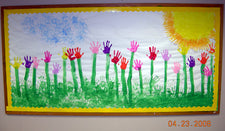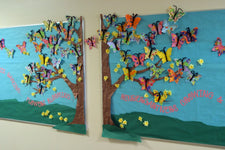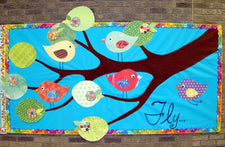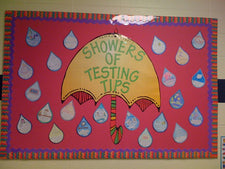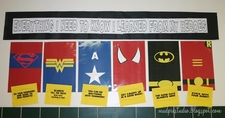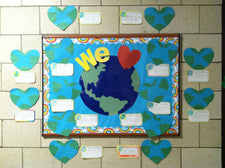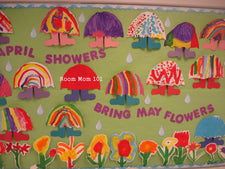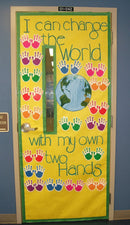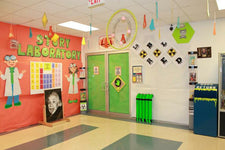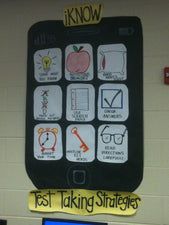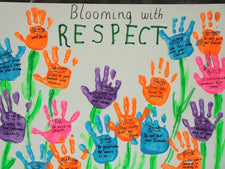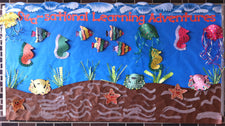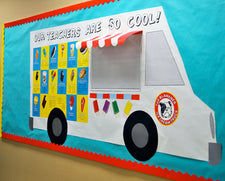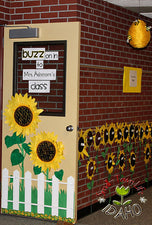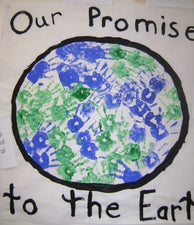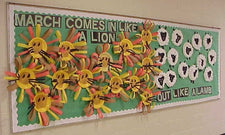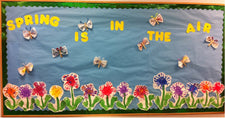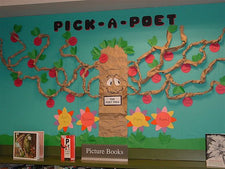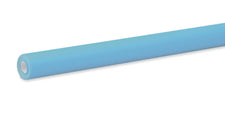Designing A Fantastic Bulletin Board For Your Weather Unit

If your curriculum includes a weather unit, be sure to take a look at this fabulous weather bulletin board from second grade teacher, Dana Naylor. Not only does it include important weather elements/concepts, it is also the backdrop of some super fun classroom exercises that your kiddos are sure to love! Here's what Dana has to say about using it in the classroom,
“I have each of the students do the forecast for a day. Along with the daily weather forecast [including temperature, current conditions, humidity, wind speed, precipitation], students are asked to report that night's moon, compare/contrast the weather conditions in a different state using our weather chart, determine what [weather] resource was the most accurate for that day, and then go through the stages of the water cycle. At the end of the unit, we have our local Weatherman come (Tom Clark). He does the forecast on our board and we get a little “fame” by being on the news that night.”
Weather Board Elements
{clockwise from top left}
- Type of Front. Students describe whether the region is experiencing a cold, warm, or stationary front.
- Today's Moon. Students identify the phase of the moon and place the correct cutout onto the designated space.
- Weather Watch Map. Student meteorologists use this map to show current fronts and pressure systems, compare/contrast temperatures and weather conditions in other states, etc.
- Wind Speed. Students move the hand on the gauge to display the day's wind speed.
- The Weather Today Is... Students select the weather cards that match the day's conditions {i.e. windy, partly cloudy, sunny, rainy, stormy, etc.} and place them on the display mat.
- Our Weather Graph. To keep track of the types of weather conditions experienced throughout the entire month, student's create a bar graph, placing the appropriate weather cutout {i.e. sun, cloud, rain drop, snowflake, etc.} on the graph.
- Temperature. Students display the forecasted temperature for the day.
- Who Is The Most Accurate? Students choose from a list, which weather resource forecast was the most accurate, placing a check mark beside it on the graph.
The Water Cycle
Around the bulletin board, Dana created and displayed cutouts of the water cycle. Freehand the elements or find clip art images online that can be enlarged and traced using your classroom projector system. In the top left corner, create a storm cloud from gray background paper, lightening bolts from yellow bulletin board paper, and various forms of precipitation from scraps of blue construction paper {i.e. rain drops, snowflakes, hail, etc}. Add a large red arrow pointing counter-clockwise; the point of the arrow ending at the bottom left corner of the board. At the bottom of the board, using a long strip of blue and/or green bulletin board paper, create water and/or grass. Add a second red arrow, starting at the bottom right corner and pointing upwards. At the top right corner, create a sun cutout from yellow and/or orange background paper, as well as a cloud from white bulletin board paper. The third arrow should complete the cycle, moving counter-clockwise and pointing at the collection of 'precipitation' cutouts at the top left corner of the board. Students can use these graphics to recount the main elements of the water cycle – evaporation, condensation, and precipitation.
Bulletin Board Wrap-Up
Dana decorated the board with light blue background paper and added a simple blue border to tie everything together. All in all, this provides a fantastic splash of color to the walls for your weather unit and inspires some great learning exercises!
Thanks so much for stopping by! We'd love to know how you incorporate your weather unit into your classroom decor, so be sure to leave a comment below!
